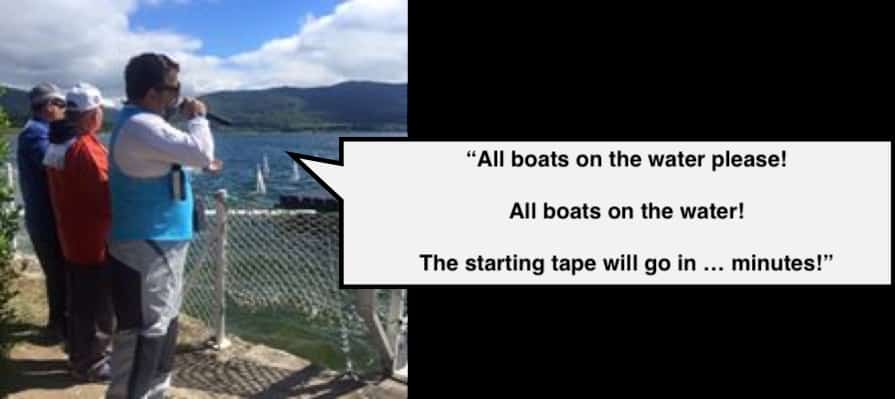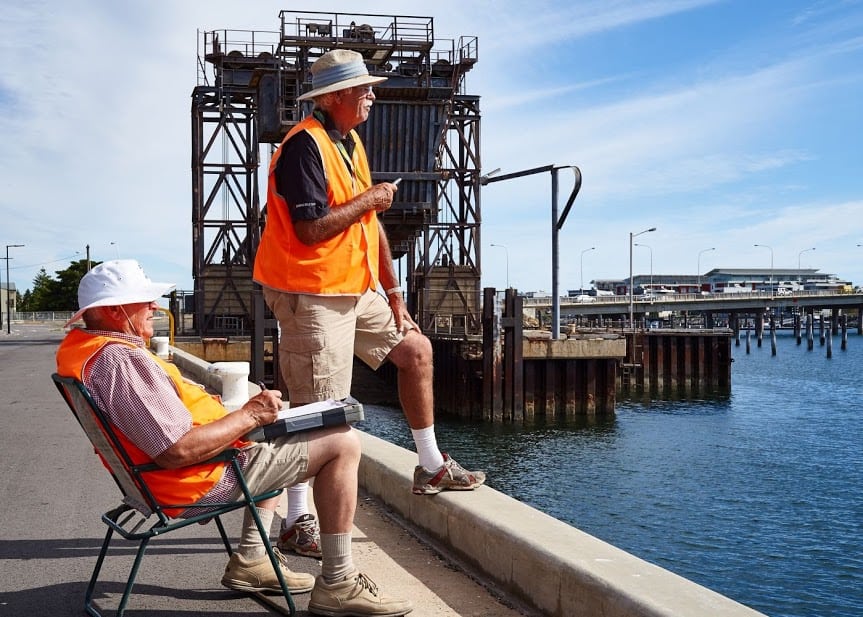1. OBJECTIVE
Following completion of this module, you will have sufficient knowledge to manage the commencement of racing during the regatta in a fair manner.
2. REFERENCES
For this module, you will need access to the current versions of the following references:
- Racing Rules of Sailing 2021 – 2024 (RRS)
- NZRYA Race Management Manual (NZRYA RMM)
- NZRYA Standard Notice of Race (NZRYA SNOR)
- NZRYA Standard Sailing Instructions (NZRYA SSI), and
- Heat Management System (HMS)
3. SUGGESTED READING
You should read the following and any other section to aid your understanding for this module:
- Racing Rules of Sailing
- Definitions
- Racing
- Part 2: When Boats Meet
- Preamble
- Part 3: Conduct of a Race
- 26: Starting Races
- 32.1: Shortening or Abandoning after the start
- 35: Race Time Limit and Scores
- Appendix E: Radio Sailing Racing Rules
- E 3.4: Starting and Finishing
- Definitions
- NZRYA Race Management Manual
- RaceManagement Policy
- 3: Times / Timing / Changes in Schedule
- 8: Postponing a Race During the Starting Procedure
- Job Descriptions: Race Officer
- 6: Shortened Race
- 7: Abandoned Race
- RaceManagement Policy
- NZRYA Standard Sailing Instructions
- 5: The Courses
- 8: The Start
- 9: Racing Times
- 10: Time Limit and Time Out Limit
- Heat Management System
- 2.2: Time Out Limit
PLEASE NOTE: The Race Officer will often act as the starting judge. Details regarding the Starting Procedure aer contained in Module 8.
4. BOATS IN THE WATER
At the commencement of racing, a warning signal should be given by the Race Officer allowing sufficient time for all boats scheduled to race in the first heat to launch and sail to the start line.
The Race Officer should make every effort to commence racing at the advertised time.

5. POSTPONING A RACE
The Race Officer has the ability to either postpone racing or even abandon a race once it has commenced. If the sailing instructions allow, the Race Officer can also shorten a course.
Postponement should be considered if there are any concerns:
- regarding the safety of competitors or officials
- that racing or continuing to race is likely to cause damage to boats
- regarding the ability to hold a fair race (e.g. excessively shifty wind, marks missing or drifted, start line excessively biased)
- that boats do not have the ability to be able to fulfil their requirements under the racing rules of sailing (excessively heavy or light wind).
A race can only be postponed before it has commenced. After the countdown has reached “Start”, the only option then is to abandon the race.
6. CHECK TO SEE WHICH BOATS ARE ON THE WATER
For the purposes of scoring, it is necessary to know which boats are ‘sailing in the vicinity of the start’. In conjunction with your scorer or recorder, go through the list of competitors scheduled to race in the heat, and make note of who is present on the water.

7. START THE COUNTDOWN TAPE
At the advertised time, provided you are satisfied that the conditions and course are satisfactory, the Race Officer should start the countdown tape. At this stage, it is very important that the Race Officer remember the fundamental principle of fairness to all competitors. It may be very tempting to wait until all competitors are present on the water, sailing in the vicinity of the start line.
As Race Officer, remember that it is not your responsibility to ensure that boats have presented themselves to race. That is the responsibility of the skipper.
It is vital that the tape commence at the advertised time, or as soon after as possible in fairness to those skippers who are ready to start on time. Holding the tape could result in major disadvantages to those skippers who have conformed with the time requirements. There could be weed picked up in the water whilst sailing around, boats might tangle or run aground, boats might pick up water into their hull.
8. WHEN DO THE RACING RULES OF SAILING COMMENCE?
Boats participating in a race come under the Racing Rules of Sailing when they are sailing in the racing area and intend to race. In NZRYA regattas, a two-minute countdown tape is used. The preparatory signal is one minute prior to the start of the race, and this is the time at which the Racing Rules of Part 2 (When Boats Meet) switch on.
Prior to the prepartory signal, a boat cannot be penalized for breaking a rule of part 2 except if they break Rule 14 when the incident results in injury or serious damage, or rule 24.1 (interfering with another boat racing)
9. ABANDONING A RACE
The Racing Rules of Sailing contain specific requirements in relation to shortening and abandoning races. These rules are found in RRS 32.1, which you should have a look at.
Once a race has commenced, abandonment should be considered as a last option. Often in radio sailing, abandonment is considered when a major wind shift has occurred on the first leg of a course. In this scenario, if the leading boats arrive at the first mark without tacking, the windward mark has not been positioned to windward – it has been below a close hauled course – the Race Officer will consider abandonment.
Note that this is not a rule, but a common practice. The Race Officer is not compelled to make this judgement. The decision to abandon should be based purely on whether it was a fair start, and whether any boats have been disadvantaged.
Once the leading boat has finished the course within the time limit, the Race Officer must consider the impact on all boats prior to abandoning the race.
The process for abandoning the race involves making two sound signals and hailing “race abandoned” then repeating the hail.


Other considerations in relation to abandoning a race might be:
- the appearance of a thunderstorm with lightning
- an event which makes it impossible to view the whole course
- the safety of participants, including officials
- that the race will start after the advertised time for conclusion of racing
- wind conditions that make for an unfair race.
END OF MODULE 4.
